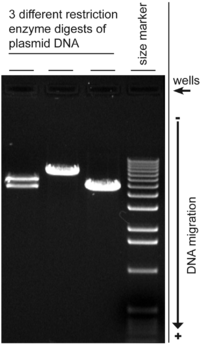
Photo from wikipedia
As basic building blocks for next-generation information technologies devices, high-quality p-n junctions based on van der Waals (vdW) materials have attracted widespread interest. Compared to traditional two-dimensional (2D) heterojunction diodes,… Click to show full abstract
As basic building blocks for next-generation information technologies devices, high-quality p-n junctions based on van der Waals (vdW) materials have attracted widespread interest. Compared to traditional two-dimensional (2D) heterojunction diodes, the emerging homojunctions are more attractive owing to their intrinsic advantages, such as continuous band alignments and smaller carrier trapping. Here, utilizing the long-range migration of Cu+ ions under an in-plane electric field, a lateral p-n homojunction was constructed in the 2D layered copper indium thiophosphate (CIPS). The symmetric Au/CIPS/Au devices demonstrate an electric-field-driven resistance switching (RS) accompanied by a rectification behavior without any gate control. Moreover, such rectification behavior can be continuously modulated by poling voltage. We deduce that the reversable rectifying RS behavior is governed by the effective lateral build-in potential and the change of the interfacial barrier during the poling process. Furthermore, the CIPS p-n homojuction is evidenced by the photovoltaic effect, with the spectral response extending up to the visible region due to the better photogenerated carrier separation efficiency. Therefore, this work provides a facile route to fabricate homojunctions through electric-field-driven ionic migration.
Journal Title: ACS nano
Year Published: 2023
Link to full text (if available)
Share on Social Media: Sign Up to like & get
recommendations!